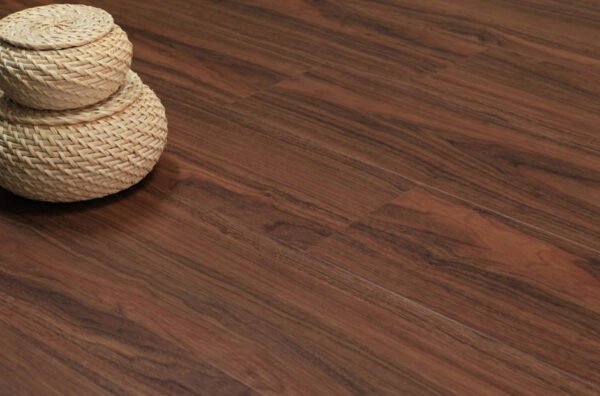Since the beginning of the automotive industry the choice of material for manufacturers was overwhelmingly steel. Well, if we go back far enough, we could use wood as well but, modern vehicles steel has been the choice.
With ever increasing government regulations forcing car makers to find ways to increase their vehicles fuel economy, weight has been in their crosshairs.
What if we could find a material that is 10 times stronger than steel and 2 – 5 times lighter weight. Seems like a material that we could only find in comic books. Look no further than Carbon Fiber. A material that was first used by an automotive leader in innovation, McLaren.
Table of Contents
Carbon Fiber the material of Tomorrow
Even though McLaren first used carbon fiber close to 30 years ago. The notion of a commercial use for carbon fiber was something of a dream; a material that was too costly to be used in anything other than spaceships.
Today, carbon fiber is becoming more and more popular, and, thanks to technology advancements, is getting cheaper. So, what does this material offer the automotive industry?
Carbon fiber is a strong, stiff material that has the potential to replace steel in various automotive components. To give it its unique strength, carbon atoms are bonded together in alignment with the long axis of the fiber, as the crystal alignment gives the material its high strength-to-volume ratio. Depending on how the carbon fiber is layered engineers can vary the amount of strength, flex, and other properties to maximize performance.
What is carbon fiber?
Carbon fiber was invented in Cleveland, Ohio in 1958. The process of making it is energy-extensive, however, new methods of producing it are being introduced and are promising. The main component in carbon fiber is called polyacrylonitrile, or PAN, it accounts for more than 90% of all carbon fiber production.
Typically, carbon fiber is combined with other materials to form composites; it’s usually the case that carbon fiber is impregnated with materials like plastic or graphite. The fact that it can be integrated with other materials to reap their benefits all while maintaining its unique features, is all the more reason why this material is becoming more and more popular as new uses for it come to light.
The growing popularity of carbon fiber in the automobile industry can be traced down to the impressive numbers it produces: Promising to reduce passenger car weight by 50% and improve fuel efficiency by around 35%, all of this without jeopardizing car safety or performance.
It’s no wonder that car enthusiasts like it and believe in the potential it has to replace the materials in use to manufacture the bodies of automobiles. On top of all of that, carbon fiber satisfies the aesthetic condition of automobile enthusiasts by producing a unique and distinct appearance that is virtually impossible to replicate.
Its ability to enhance fuel efficiency is why a lot of environmentalists are considering it as an alternative for steel. It’s quite rare to find environment and automobile aficionados riled up about the same thing, but carbon fiber is well worth the hype.
Less weight, More Fun
When the Alfa Romeo 4C was introduced to the market it weighed in at around 2500 pounds due to its extensive use of carbon fiber. During the time where its flagship peers weighed around 3,000 pounds.
During test-drives, it was reported that the difference in weight made for a more thrilling driving experience, with an enhanced ability to maneuver, and a quick response to inputs from the driver. Not to mention the thrilling acceleration and even improved fuel economy due the lighter weights of the materials that were used.
In the future, we can only imagine the cool things that engineers will accomplish with this material. How about the greatest in weight savings, a carbon fiber thermostat housing? Maybe, we will have to watch to see the extent that this material is used.
Maybe we will see the F-150 switch from aluminum to carbon fiber. Imagine the cost increase by using carbon fiber for an entire pickup truck, probably would take the F-150 out of the best-selling vehicle status it normally carries.
Electric vehicles and carbon fiber
Due to its extreme strength and relative light weight, the trade-off carbon fiber offers with electric fueled vehicles is remarkable.
Given that Lithium-Ion batteries are quite expensive, using a material that would reduce the total weight of the car would mean an ability to use a smaller battery, which is a winning trade-off for electric car manufacturers. Or manufacturers could use a larger battery to compensate for the weight loss and increase the vehicle’s electric range.
With the ground that electric cars are gaining by the day, with support from giants like Tesla, and with the new methods of manufacturing carbon fiber that are cost-effective, it is undoubtedly the case that the future resides with this amazing, promising material.
We can only begin to think of the possibilities of this amazing material. Only time will tell if we see carbon fiber become a more mainstream material used on vehicles of the future.
Author Bio
John Morris is a staff writer at AutoKnowIt.com. He combines his technical expertise from years as an automotive technician and professor with his flair with words. Giving his readers a unique perspective that they can only get from him.





